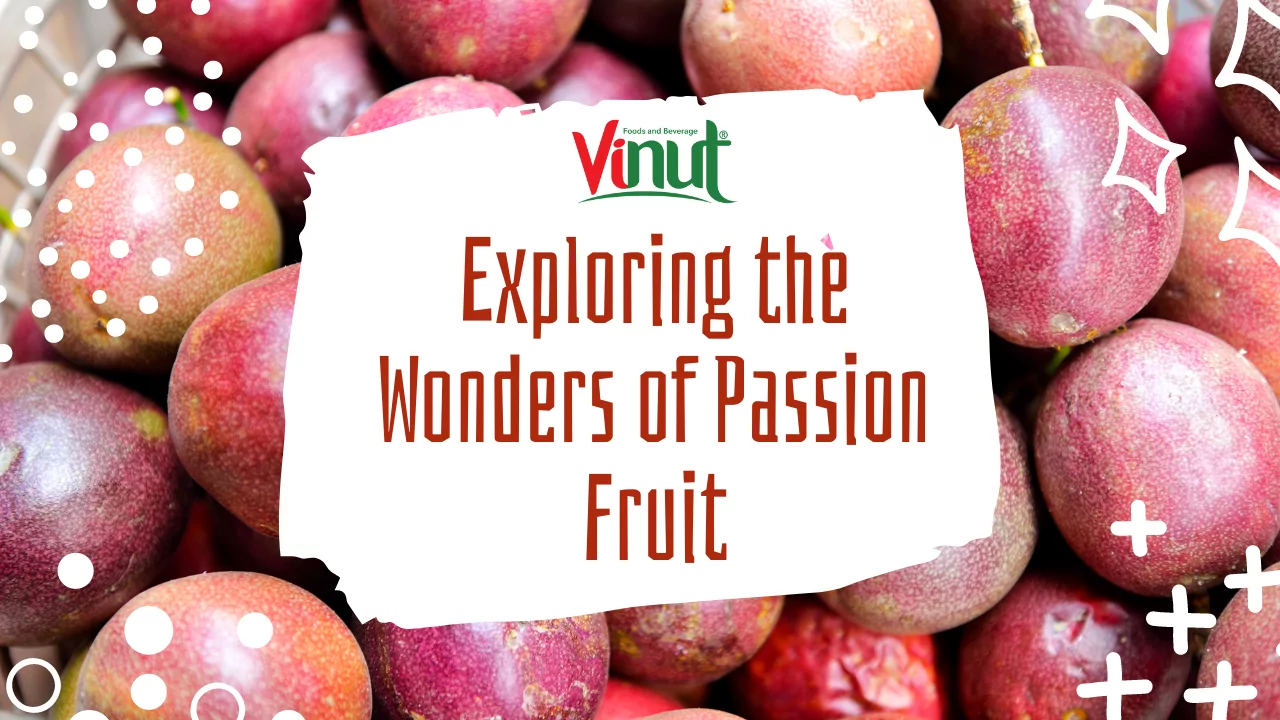Exploring the Wonders of Passion Fruit

Summary
Passion fruit is a tropical delight that captivates the senses with its unique flavor and aroma. Often hailed for its health benefits and culinary versatility, this vibrant fruit has earned a special place in both traditional and modern cuisine. From smoothies to desserts, the fruit offers an explosion of taste that can elevate any dish.
Let us dive into the world of passion fruit, exploring its history, nutritional value, culinary applications, and much more.
Understanding the Origin of Passion Fruit
The passion fruit, scientifically known as Passiflora edulis, has a rich history intertwined with various cultures.
Historical Background
This fruit originates from South America, particularly Brazil, Paraguay, and Argentina. The indigenous peoples of these regions revered the plant, not only for its edible fruit but also for its medicinal properties. The name “passion fruit” derives from the Passionflower, which was named by Spanish missionaries who associated the flower’s intricate design with the Passion of Christ. They believed the various parts of the flower symbolized different elements of Christ’s crucifixion.
As explorers ventured to new lands, they brought the passion fruit along, leading to its spread throughout the tropics, including Hawaii, Australia, and Southeast Asia. Its adaptability allows it to thrive in diverse climates, making it a beloved fruit worldwide.
Cultural Significance
In many cultures, the fruit signifies many things beyond mere nourishment. In South American traditions, it is often linked to celebration and sharing among family and friends. Festivals commonly feature dishes made with this fruit, highlighting its importance in cultural culinary practices.
Furthermore, it is frequently used in traditional medicine, believed to possess calming effects and aid in digestion. Its vibrant color and compelling flavor have made it a staple in gourmet cooking, showcasing its versatility across various cuisines.
Nutritional Benefits of Passion Fruit
The passion fruit is not just a delicious treat; it also packs a powerful nutritional punch.
Vitamins and Minerals
One of the standout features of this fruit is its high vitamin C content. A single serving can provide about 100% of the daily recommended intake of vitamin C, which plays a vital role in boosting the immune system and promoting skin health.
In addition to vitamin C, it contains other essential vitamins such as vitamin A and several B vitamins. It is also a good source of dietary fiber, which aids in digestion and promotes gut health. The presence of minerals like potassium and magnesium further enhances its nutritional profile, contributing to heart health and muscle function.
Antioxidant Properties
Antioxidants are crucial for combating oxidative stress in the body, which can lead to chronic diseases. The fruit contains various antioxidants, including carotenoids and polyphenols, which help neutralize free radicals. Regularly consuming antioxidant-rich foods like fruit can improve overall well-being and longevity.
Moreover, research suggests that the compounds found in passion fruit may help reduce inflammation linked to numerous health issues, including arthritis and heart disease. Its potential anti-inflammatory properties make it a valuable addition to a balanced diet.
Culinary Uses of Passion Fruit
The culinary world embraces the versatility of passion fruit, incorporating it into a wide array of dishes.
Fresh Consumption
Many people enjoy eating this fruit fresh, scooping out the pulp and seeds to savor its tangy sweetness. The juicy interior bursts with flavor, making it a perfect topping for yogurt, oatmeal, or salad. Its vibrant color and exotic appeal make it a favorite among chefs looking to elevate their dishes.
Combining the fruit with fresh fruits creates refreshing salads or smoothies that burst with flavor and nutrition. Whether blended or sliced, passion fruit adds a tropical twist to summer treats, capturing the essence of sunny days.
Cooking and Baking
Beyond fresh consumption, passion fruit shines in cooking and baking. Its unique flavor pairs beautifully with both sweet and savory dishes. Chefs use it to create sauces for grilled meats and seafood, adding depth and complexity to the dish. The tartness of passion fruit balances rich flavors, creating a delightful harmony on the palate.
In desserts, passion fruit is often used in mousses, cheesecakes, and tarts, where its bright flavor contrasts beautifully with creamy textures. Additionally, it serves as a flavorful ingredient in dressings and marinades, enhancing the taste of salads and vegetables.
Beverages and Cocktails
Passion fruit is a popular choice for beverages, as its bold flavor complements both alcoholic and non-alcoholic drinks. Passion fruit juice is often enjoyed on its own or combined with other juices for a revitalizing beverage.
Craft cocktails featuring passion fruit have gained popularity, thanks to their exotic appeal and vibrant color. Bartenders skillfully use pureed passion fruit to create refreshing cocktails that transport drinkers to tropical paradises. From mojitos to margaritas, the possibilities are endless when it comes to incorporating this fruit into exciting drinks.
| Culinary Use | Description |
|---|---|
| Fresh | Eaten solo or added to salads and yogurts |
| Cooking | Used in sauces for meats and vegetables |
| Baking | Found in desserts like mousses and cheesecakes |
| Beverages | Popular in juices and cocktails |
In conclusion, the passion fruit is a remarkable fruit that embodies the essence of tropical paradise. With its rich history, impressive nutritional benefits, and diverse culinary uses, it has rightfully earned a spot in our hearts and kitchens. As you explore the wonders of passion fruit, whether through growing it at home or experimenting with recipes, embrace its unique flavor and aroma. This captivating fruit not only nourishes the body but also enchants the senses, inviting all of us to savor the sweet moments life has to offer.
